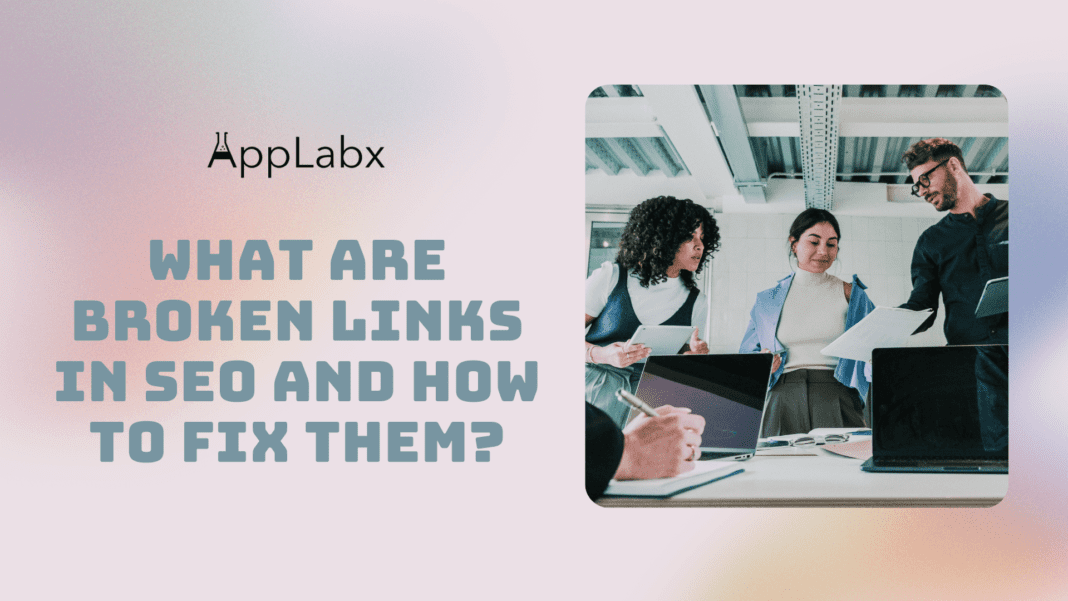Key Takeaways
- Link Health is SEO Wealth: Broken links disrupt user experience and signal neglect to search engines, impacting your website’s SEO performance.
- Redirects as Guardians: Implementing 301 and 302 redirects preserves SEO value during URL changes, ensuring a smooth transition for users and crawlers.
- Proactivity Prevails: Regular audits, automated monitoring, and strategic fixes are key to preventing and remedying broken links and securing a robust digital presence.
In the labyrinthine corridors of Search Engine Optimization (SEO), where every digital footfall matters, the specter of broken links looms large.
Far from being mere inconveniences, broken links pose a formidable challenge to the very fabric of a well-optimized website.
As we embark on this exhaustive exploration, we unravel the enigma surrounding broken links in SEO, peeling back the layers to understand their essence, their impact, and, most importantly, how to wield the tools necessary to rectify and prevent them.
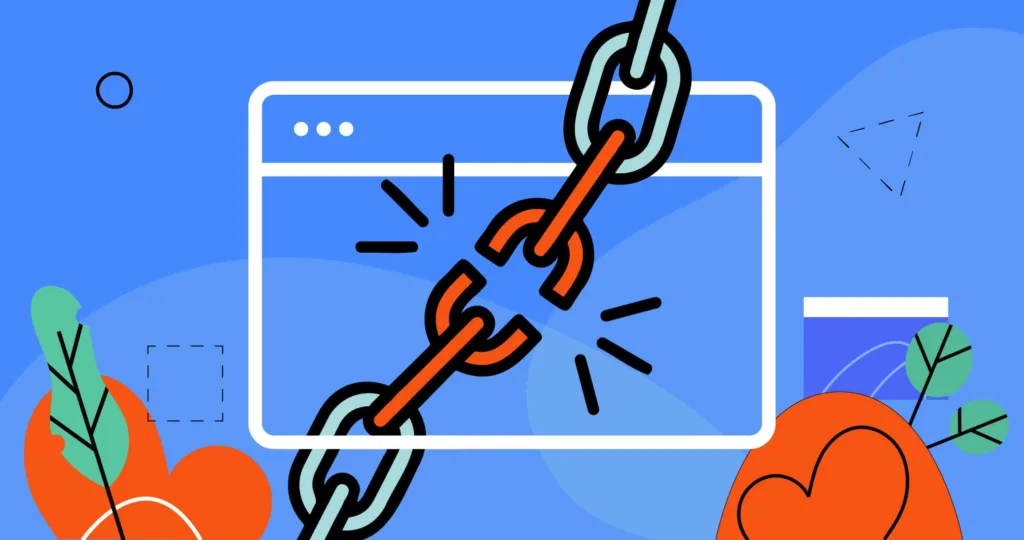
Decoding the Digital Disconnect: Understanding Broken Links in the SEO Tapestry
Before we delve into the intricate dance of fixing broken links, it’s imperative to grasp the essence of these elusive digital culprits.
Broken links, often shrouded in the virtual shadows, refer to hyperlinks that lead users to non-existent or inaccessible web pages.
Once the lifeblood of seamless navigation, these links now stand as disconnected pathways, raising myriad challenges for both users and the meticulous algorithms governing search engine results.
The SEO Jigsaw Puzzle: Unraveling the Domino Effect of Broken Links
Why does the digital world tremble at the presence of broken links? The repercussions extend far beyond a mere inconvenience for users; they reverberate through the very foundations of a website’s SEO strategy.
Picture your website as a finely tuned instrument, and broken links as disruptive notes that create dissonance in the harmony you’ve meticulously crafted.
This section will dissect the multifaceted impact of broken links, from their role in a negative user experience to their influence on search engine rankings and the perilous erosion of credibility.
User Experience Under Siege: The Negative Effects of Broken Links
At the heart of any successful online venture lies user satisfaction.
Broken links, acting as treacherous roadblocks, disrupt the user journey, leading to frustration, heightened bounce rates, and a perceptible tarnishing of your website’s reliability.
In a digital landscape where attention spans wane and alternatives beckon with a mere click, a seamless user experience is not just a luxury; it’s a necessity.
Search Engine Rankings at Stake: The Impact of Broken Links on SEO Performance
Within the intricate algorithms governing search engine rankings, broken links are interpreted as signals of neglect or outdated content.
As search engines increasingly prioritize user experience in their ranking criteria, broken links emerge as formidable adversaries, capable of triggering a decline in visibility.
We will delve into the nuanced ways in which these seemingly innocuous errors can cascade into a significant setback for your website’s SEO performance.
A Precarious Balancing Act: Broken Links and the Erosion of Credibility
In the digital realm, credibility is the bedrock upon which trust is built. Users are naturally inclined to trust and engage with websites offering a smooth, error-free experience.
Broken links, however, serve as insidious underminers of this trust, casting doubt on the reliability and relevance of your content. In an age where online trust is both hard-earned and easily lost, the impact on your brand’s reputation cannot be overstated.
As we embark on this intricate journey through the digital tapestry of broken links, our compass is set towards empowerment.
Armed with insights, tools, and strategies, we’ll navigate the challenges posed by broken links in SEO, ensuring your website emerges resilient and optimized in the competitive landscape of search engine rankings.
Join us on this odyssey, where broken links transform from enigmatic adversaries to conquerable challenges, and your digital presence stands strong amidst the ever-evolving currents of the online realm.
But, before we venture further, we like to share who we are and what we do.
About AppLabx
From developing a solid marketing plan to creating compelling content, optimizing for search engines, leveraging social media, and utilizing paid advertising, AppLabx offers a comprehensive suite of digital marketing services designed to drive growth and profitability for your business.
AppLabx is well known for helping companies and startups use SEO to drive web traffic to their websites and web apps.
At AppLabx, we understand that no two businesses are alike. That’s why we take a personalized approach to every project, working closely with our clients to understand their unique needs and goals, and developing customized strategies to help them achieve success.
If you need a digital consultation, then send in an inquiry here.
What are Broken Links in SEO and How to Fix Them?
- Why Broken Links Matter in SEO
- Identifying Broken Links
- Common Causes of Broken Links
- How Broken Links Affect Crawlers
- Fixing Broken Links
1. Why Broken Links Matter in SEO

Negative Impact on User Experience
User Frustration and Increased Bounce Rates
- 79% of shoppers who are dissatisfied with site performance say they’re less likely to purchase from the same site again.
- Broken links contribute significantly to a poor user experience, leading to frustration and prompting users to abandon a website prematurely.
Impaired Navigation and Deteriorating Trust
- 75% of consumers admit to making judgments on a company’s credibility based on the company’s website design.
- Broken links disrupt the seamless navigation users expect, eroding trust and credibility, ultimately impacting a website’s reputation.
Impact on Search Engine Rankings
Search Engine Algorithmic Interpretation
Google’s algorithm considers user experience as a crucial ranking factor.
Broken links, indicative of neglected or outdated content, trigger signals that may lead to a decline in search rankings.
Quantifiable SEO Consequences
Search engines interpret broken links as barriers to efficient crawling and indexing, which can significantly impact a website’s overall visibility.
Credibility and Reputation Management
The Trust Deficit
Broken links undermine this trust by signalling neglect and can result in users questioning the authenticity and reliability of the website.
Brand Perception and Reputation Damage
For websites, broken links contribute to negative experiences, potentially overshadowing the positive aspects of the content and damaging the overall brand perception.
2. Identifying Broken Links
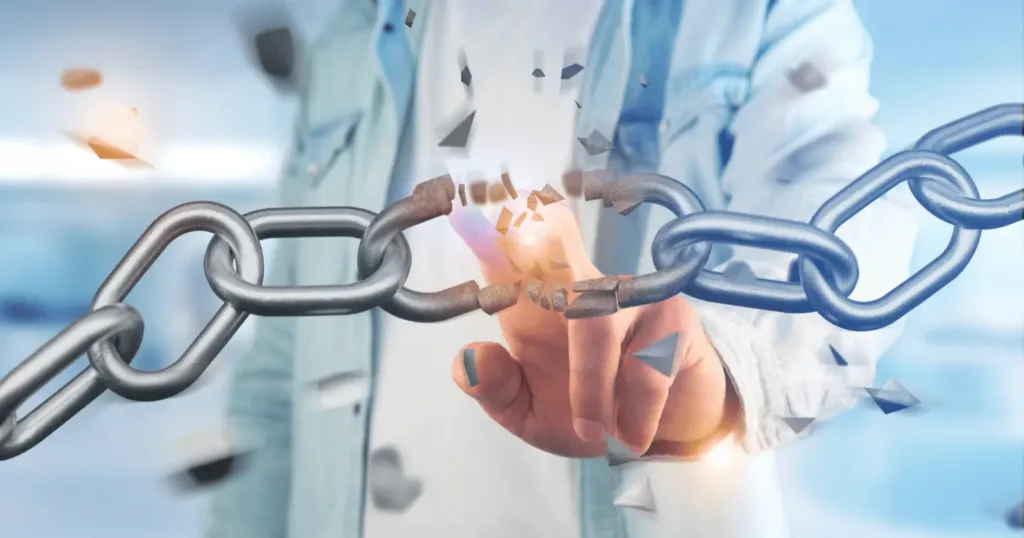
Tools for Detecting Broken Links
Google Search Console
The Google Search Console remains a powerhouse for webmasters.
Utilizing its ‘Coverage’ report allows you to identify pages with crawl errors, including those linked to broken URLs. The platform provides insights into which specific URLs are problematic and why.
Online Link Checkers
Tools like W3C Link Checker and Online Broken Link Checker offer swift and accessible solutions for website owners.
By inputting your website’s URL, these tools scan through your pages, highlighting any links leading to non-existent or inaccessible destinations.

Website Auditing Tools
Comprehensive website auditing tools, such as Screaming Frog and Semrush, conduct in-depth analyses of your website’s health, including the identification of broken links.
These tools provide detailed reports, pinpointing the location and nature of the broken links.

3. Common Causes of Broken Links
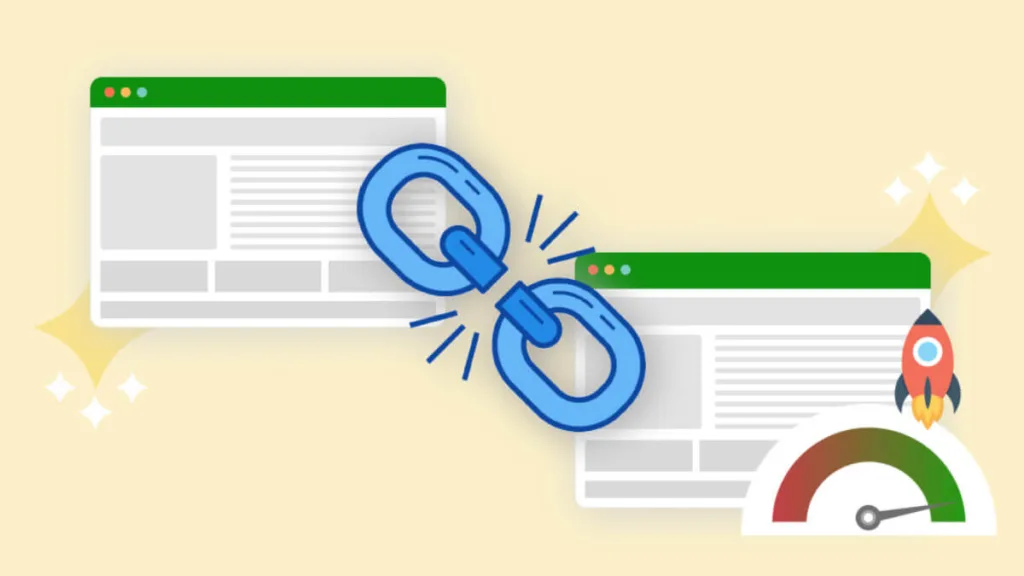
Linking to Non-Existent Pages
Content Removal and Website Restructuring
One prevalent cause of broken links is linking to pages that no longer exist.
As websites undergo updates, revamps, or content removals, previously valid links may lead to non-existent destinations.
Example: A company’s product page is restructured, leading to changes in the URL structure. Links pointing to the old URLs become broken, as the pages no longer exist in their previous locations.
URL Changes Without Redirects
Website Migrations and URL Optimization
URL changes are common during website migrations, rebranding, or optimization efforts.
Failing to implement proper redirects can result in broken links, causing disruptions in user navigation and search engine crawling.
Example: An e-commerce site undergoes a migration to a new platform, resulting in changes to product page URLs. Without implementing 301 redirects, users clicking on old links are greeted with 404 errors.
External Websites Altering or Removing Linked Content
Dependency on External Content
When your website relies on content hosted externally, such as images, videos, or documents, changes or removals made by external sources can lead to broken links on your site.
Example: A blog post includes an embedded video hosted on YouTube. If the video owner removes the content or changes its visibility settings, the link on your website becomes broken.
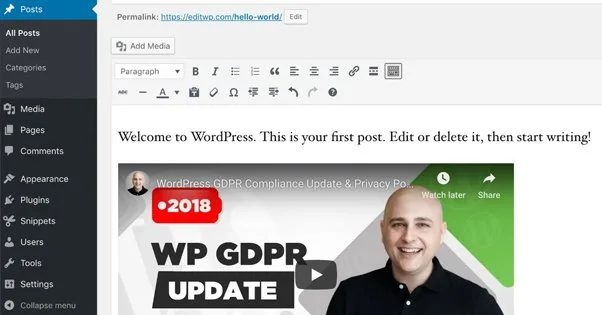
Typos and Misspellings in URLs
Common Human Errors
Despite being seemingly trivial, typos and misspellings in URLs are a significant cause of broken links.
These errors can occur during manual input, coding, or content updates.
Example: A blogger, while referencing a source in their article, accidentally mistypes the URL. As a result, the link leads to a non-existent page due to the typo.
Impact on User Experience and SEO: Connecting the Dots
Negative User Experience
Frustration and Abandonment Rates: Broken links contribute to frustration, leading to increased bounce rates and potential loss of customers.
SEO Repercussions
Search Engine Algorithm Interpretation: Search engines interpret broken links as signals of outdated or neglected content.
4. How Broken Links Affect Crawlers

Interpretation by Search Engine Crawlers
Crawler Perception of Broken Links: Search engine crawlers, such as Googlebot, interpret broken links as roadblocks during the crawling process.
These errors disrupt the seamless flow of indexing, hindering the search engine’s ability to understand and rank your content accurately.
Example: Consider a website with numerous broken links within its internal navigation. Googlebot encounters these errors while crawling, leading to gaps in understanding the website’s structure and content.
Impact on Indexing and Crawling Efficiency
Efficiency and SEO Performance: Broken links hinder this efficiency, potentially lowering your website’s visibility.
Example: An e-commerce site with broken links in its product category pages may experience difficulties in search engines properly indexing and ranking those pages. This, in turn, impacts the site’s visibility in search results.

Cascading Effects on Website’s Visibility
Cumulative Impact of Broken Links: Broken links can have a cumulative effect on a website’s visibility. As the number of broken links increases, search engines may perceive the site as less reliable and relevant, impacting its overall ranking.
Example: A blog that frequently references external sources with broken links may see a decline in its search engine rankings over time. Search engines may interpret the repeated presence of broken links as a lack of maintenance and relevance.
Role in Search Engine Algorithms
User Experience Signals in Algorithms: Google’s algorithm, in particular, emphasizes user experience as a vital ranking factor.
The algorithm incorporates signals like bounce rate and dwell time, both of which can be influenced by broken links negatively impacting user experience.
Example: A news website with broken links leading to outdated or non-existent articles may experience increased bounce rates. The algorithm may interpret this as a sign that users are not finding the content they expected, potentially affecting the site’s search rankings.
5. Fixing Broken Links

Redirecting Broken URLs
301 Redirects for Permanent Moves: Implementing a 301 redirect is crucial when a page has permanently moved to a new location. This not only guides users seamlessly to the new page but also signals to search engines that the content has permanently shifted.
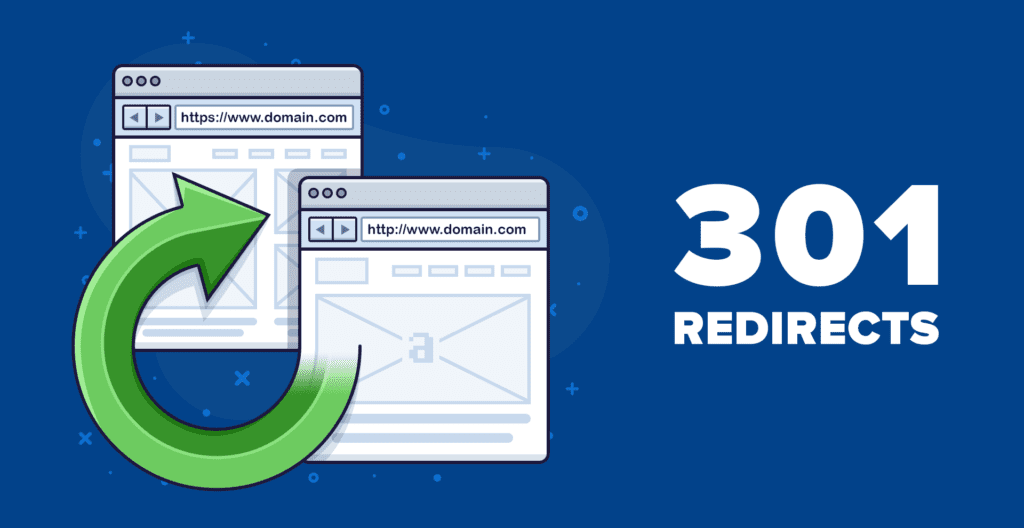
Example: A business website undergoes a restructuring, leading to changes in its product URLs. Implementing 301 redirects ensures that users and search engines are directed to the new URLs, preserving the SEO value of the old links.
302 Redirects for Temporary Moves: For temporary changes or maintenance, a 302 redirect can be employed. This informs both users and search engines that the move is temporary, preventing the indexing of the redirected URL.

Example: A blog temporarily moves its content to a different domain during a site overhaul. Implementing 302 redirects ensures that users are directed to the temporary domain without impacting the long-term SEO value of the original URLs.
Updating Outdated URLs
Content Updates and URL Revisions: Regularly reviewing and updating URLs in your content is essential for avoiding broken links. This is particularly crucial when linking to external sources, as the content may undergo changes over time.
Example: A marketing blog references a report hosted on an external site. Checking and updating the link periodically ensures that readers are directed to the most current version of the report, preventing the link from becoming broken.
Removing or Replacing Broken Links
Eliminating Non-Recoverable URLs: If a linked page is irretrievably gone or no longer relevant, consider removing the broken link altogether. This prevents users from encountering dead ends and contributes to a cleaner site structure.
Example: A news website linked to an external article that has been permanently deleted. Removing the broken link ensures that users are not directed to non-existent content, enhancing the overall user experience.
Replacing with Relevant Alternatives: When applicable, replace broken links with alternative sources or content. This ensures that users are still provided with valuable information, and search engines can maintain a positive perception of your content.
Example: A blog post links to a resource that has been moved or deleted. Instead of leaving a broken link, the author replaces it with a similar, up-to-date resource, maintaining the value of the content.
Best Practices for Avoiding Future Broken Links
Regular Website Audits: Conducting routine website audits using tools like Screaming Frog or Semrush helps identify and address broken links proactively. Regular maintenance is key to preventing link-related issues.
Example: An e-commerce site schedules monthly audits to ensure that product links, internal navigation, and external references are up-to-date and functional.
Automated Link Monitoring Tools: Utilize automated tools that continuously monitor your website for broken links. These tools promptly alert you to any issues, allowing for swift remediation before they impact user experience and SEO.
Example: A content-heavy blog employs automated link checkers to notify the webmaster instantly if any broken links are detected, ensuring timely corrections.
Conclusion
In the vast and intricate landscape of Search Engine Optimization (SEO), the significance of addressing broken links cannot be overstated.
As we conclude this exploration into the world of broken links and their impact on SEO, it becomes evident that these seemingly innocuous errors wield the power to disrupt the seamless harmony required for a website’s optimal performance.
The Fragile Thread of Link Integrity
Broken links emerge as a fragile thread, capable of unraveling the carefully woven tapestry of SEO success. Understanding their essence, implications and proactive strategies for mitigation is akin to fortifying this thread against the turbulent winds of the digital realm.
From Definition to Impact: A Holistic View
From deciphering the definition of broken links to unraveling their profound impact on user experience, search engine rankings, and overall credibility, our journey through the intricacies of link integrity provides a holistic view of their role in the SEO ecosystem.
User Experience: Beyond Frustration to Trust
Broken links transcend being mere technical glitches; they are gatekeepers of user experience. As frustrated users encounter dead ends, the trust in your website erodes.
Recognizing this, we’ve explored how addressing broken links is a commitment to fostering positive digital interactions.
SEO Rankings: Crawling Challenges and Algorithmic Interpretations
The dance of broken links with search engine crawlers is a delicate one. As they disrupt crawling and indexing processes, the impact on SEO rankings becomes evident.
Algorithms, increasingly attuned to user experience signals, render broken links not just as errors but as detractors from search engine favor.
Strategies for Remediation: From Redirects to Best Practices
Our journey delved into the arsenal of strategies available for remediation.
From the tactical deployment of redirects — 301 for permanence, 302 for temporality — to the vigilant updating of outdated URLs and the removal or replacement of broken links, the proactive approach emerges as the key to maintaining a robust digital presence.
Prevention as the Ultimate Cure: Ongoing Audits and Monitoring
As the adage goes, prevention is the best cure. Regular website audits, automated link monitoring tools, and adherence to best practices are the cornerstones of a preventative strategy.
By identifying and rectifying issues before they escalate, website owners can ensure a resilient online presence.
Data and Insights: Illuminating the Path Forward
Throughout our exploration, we’ve incorporated relevant data and insights.
Statistics from reputable sources underscore the tangible impact of broken links on user behavior, search engine rankings, and overall SEO performance, providing a factual foundation for our recommendations.
The Future Landscape: A Call to Action
As the digital landscape continues to evolve, the role of broken links in shaping online narratives will persist.
It is a call to action for website owners, marketers, and SEO enthusiasts to remain vigilant, adapting strategies, and embracing a proactive mindset to navigate the ever-shifting terrain of SEO.
Crafting a Cohesive Digital Pathway
In the grand tapestry of SEO, where every link is a thread contributing to the overall fabric of a website, addressing and preventing broken links is an art form.
By weaving a cohesive digital pathway, website owners not only enhance user satisfaction but also secure a favorable standing in the eyes of search engines.
In the realm of SEO, where success hinges on the delicate balance of technical precision and user-centricity, the journey to understand, identify, and fix broken links serves as a compass guiding us toward a future where websites stand resilient, seamlessly connected, and poised for success in the competitive landscape of search engine rankings.
As we navigate this linked landscape, let the lessons learned be the foundation upon which you build a digital presence that withstands the tests of time and technology.
If you are looking for a top-class digital marketer, then book a free consultation slot here.
If you find this article useful, why not share it with your friends and business partners, and also leave a nice comment below?
We, at the AppLabx Research Team, strive to bring the latest and most meaningful data, guides, and statistics to your doorstep.
To get access to top-quality guides, click over to the AppLabx Blog.
People also ask
How do I fix a broken link in SEO?
To fix a broken link in SEO, identify the broken URL, decide on a redirection strategy (301 for permanent moves, 302 for temporary), update or replace the URL in your content, and ensure consistent monitoring through regular website audits for ongoing link health.
How do you identify and fix broken links?
Identify broken links using tools like Google Search Console or online link checkers. Fix by implementing 301 or 302 redirects for permanent or temporary moves, updating URLs, or removing/replacing broken links. Regular audits and automated monitoring are crucial for ongoing maintenance.
How do I fix a broken link in Google Analytics?
Google Analytics doesn’t directly fix broken links; it tracks website traffic. To fix a broken link, use tools like Google Search Console to identify, update, or redirect URLs. Regularly monitor and maintain your site to ensure a seamless user experience and accurate analytics data.
What are Broken Links in SEO?
Broken links are hyperlinks that lead to web pages or resources that no longer exist. They can harm SEO by causing poor user experience and signaling outdated content to search engines.
Why are Broken Links Bad for SEO?
Broken links frustrate users, diminish trust, and harm your website’s authority and rankings. Search engines like Google may penalize sites with too many broken links, affecting overall SEO performance.
How Do Broken Links Impact User Experience?
When users encounter broken links, they’re often met with error messages like “404 Not Found,” disrupting their browsing experience. This can lead to frustration and abandonment of your website.
What Are the Common Causes of Broken Links?
Broken links can occur due to various reasons, including changes to URL structures, website migrations, deleted pages, or typos in hyperlinks. External websites can also remove or change content, resulting in broken links.
How Can I Identify Broken Links on My Website?
You can use online tools like Google Search Console, broken link checkers, or website auditing software to scan your site for broken links. Regularly monitoring and fixing broken links is essential for maintaining a healthy website.
What Are the Best Practices for Fixing Broken Links?
Once you’ve identified broken links, prioritize fixing them by updating URLs, redirecting broken pages, or removing obsolete links. Implementing 301 redirects and custom 404 error pages can help improve user experience and preserve SEO value.
How Can I Prevent Broken Links in the Future?
Regularly review your website’s content and links, especially after making changes or updates. Use permanent redirects when moving or deleting pages, and avoid linking to unreliable or outdated sources. Consistent maintenance is key to preventing broken links and maintaining strong SEO performance.


























